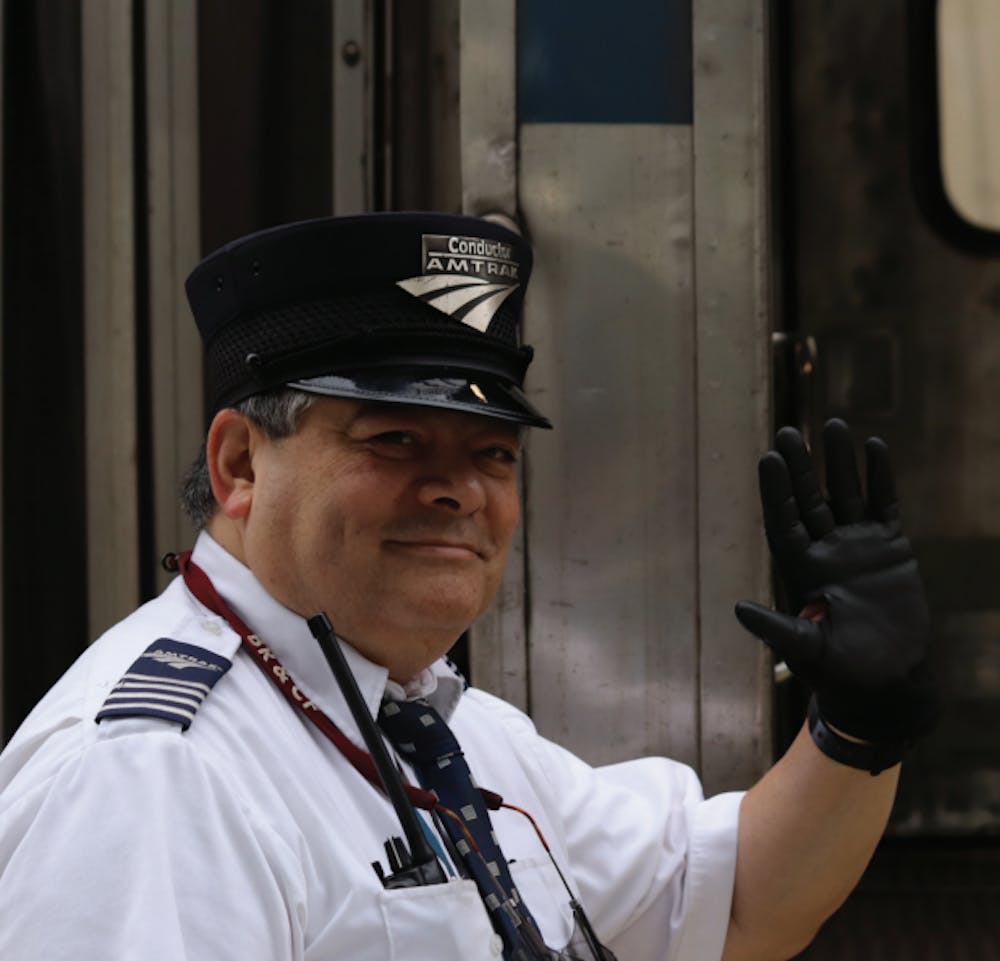Eight months ago, Middlebury became a stop on Amtrak’s Ethan Allen Express, which runs from New York Penn Station to Burlington, Vt. As Middlebury’s first passenger train stop in nearly 70 years, the new station marks a major improvement in traveling convenience for both college students and town residents.
A monthly average of 477 passengers have taken the Ethan Allen Express from the Middlebury station since its opening, while the nearby Ferrisburgh-Vergennes Station has averaged around 309 passengers, according to Toni Clithero, state coordinator of Operation Lifesaver of Vermont and Amtrak grants program manager.
Before the train stop was added, Middlebury students had to rely on Greyhound or SGA break buses in order to get to New York City. Students who have had the opportunity to take the train expressed hopes that the train will eventually run more than once a day, and that the college will start providing transportation to and from the station.
Nicholas Woreth ’26 relies on the Ethan Allen Express to get to New York City.
“Having lived in Europe before and taken quite a few trains there, I have to say that the one that passes through Middlebury is much more comfortable and has way more room than European trains on which I have been,” he said. Woreth added that he hopes the number of trains increases to more than just one per day in each direction.
Under the current schedule, one train departs Middlebury for New York City each day at 11:01 a.m.
Clithero, whose job as coordinator for Operation Lifesaver of Vermont is part of the Vermont Agency of Transportation, confirmed that they are considering adding a second daily service on the Ethan Allen Express between NYC and Burlington. “Adding an additional frequency is an objective identified in VTrans’ 2021 Rail Plan, and there are many other exciting possibilities to follow,” she said.
The Vermont Agency of Transportation 2021 Rail Plan is a 20-year plan that provides a framework for maintaining all of Vermont’s rail services and complying with state laws and regulations for safety and convenience. A large portion of the rail plan is dedicated to expanding capacity and usage of the train to match higher demand, as more and more passengers are beginning to choose rail over bus.
“Ridership on the [Ethan Allen Express] since the extension launched on July 29, 2022 has been outperforming expectations. VTrans and Amtrak had projected ridership on the extension to add between 2,000-2,500 riders per month. Since the extension launched, ridership has well exceeded expectations, and has been growing [to] an average of 3,365 riders per month,” Clithero said.
Students use the train most for weekend and holiday traveling, and the train can get very packed, according to some students, particularly when arriving midway in Albany. According to Clithero, the numbers also reflect this pattern.
“Weekend travel is always the busiest time for Amtrak trains. The winter holidays this year did result in trains being quite full and with spring break coming, we already had 200 riders booked to board the [Ethan Allen Express] on March 11,” she said. “VTrans and Amtrak are monitoring ridership trends and capacity issues on the EAX, and at this time, no additional equipment is considered necessary.”
Along with the issue of crowded train cars, some students mentioned that the small station in Middlebury can be difficult during the cold winter months. “It can get really cold in the winter.” Woreth said. “Most people come with a car and wait for the train to arrive, but when you don’t own [a car] or don’t have someone to take you to the station, it can be quite uncomfortable.”
Liza Platonov ’26 expressed similar sentiments. “The station has no indoor area, and it was freezing outside where I had to wait for the train, which was also running a bit late,” Platonov said.
Located on Middle Seymour Street, the station is exposed to cold weather without any heat source and consists of a concrete platform with a few benches for passengers to sit at if they do not have a vehicle to wait in. The station is around a mile, or about a 20-minute walk, from campus.
“I would recommend that they have a bus that goes from the station to the college and vice versa every morning and night,” Platonov said. “I felt totally safe walking there in the morning, but when my train got in around 9 p.m I felt much less safe walking back.”
Students also expressed concern with the prices of the tickets, which some students said were as high as $93 depending on the rate of occupancy on a given day. Ticket pricing shifts as the departure date nears and the train fills up, so fares can be more expensive depending on when a passenger makes their purchase.
“A one way ticket is something like $75, which is probably not within most college students’ budget, and makes a bus much more sensible. I had a ticket paid for by the college as part of the HARC trip during J-Term, but if that were not the case I would have just taken [a] car,” Arthur Furniss ’23 said.
Editor’s Note: Arthur Furniss ’23 is on the visuals team of The Campus.

Mandy Berghela '26 (she/her) is a Senior Local Editor.
Mandy previously served as a local editor and staff writer. She is a Political Science major with a History minor. Mandy serves as co-president for Southeast Asian Society (SEAS), a member on the Judicial Board, and an intern for the Conflict Transformation Collaborative. In her free time, she enjoys cycling and reading fantasy novels.




